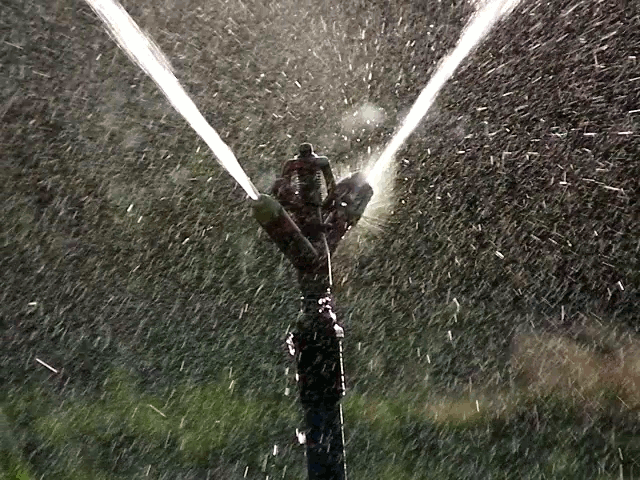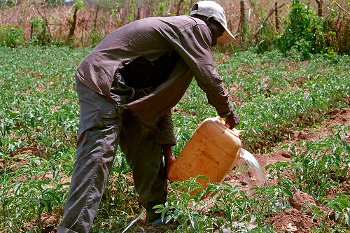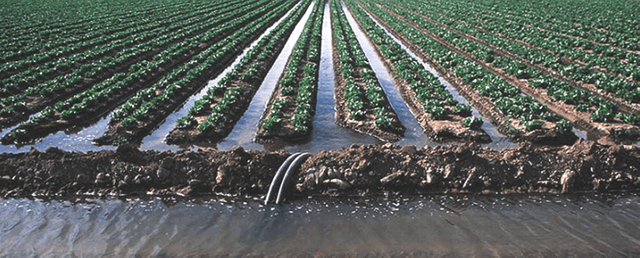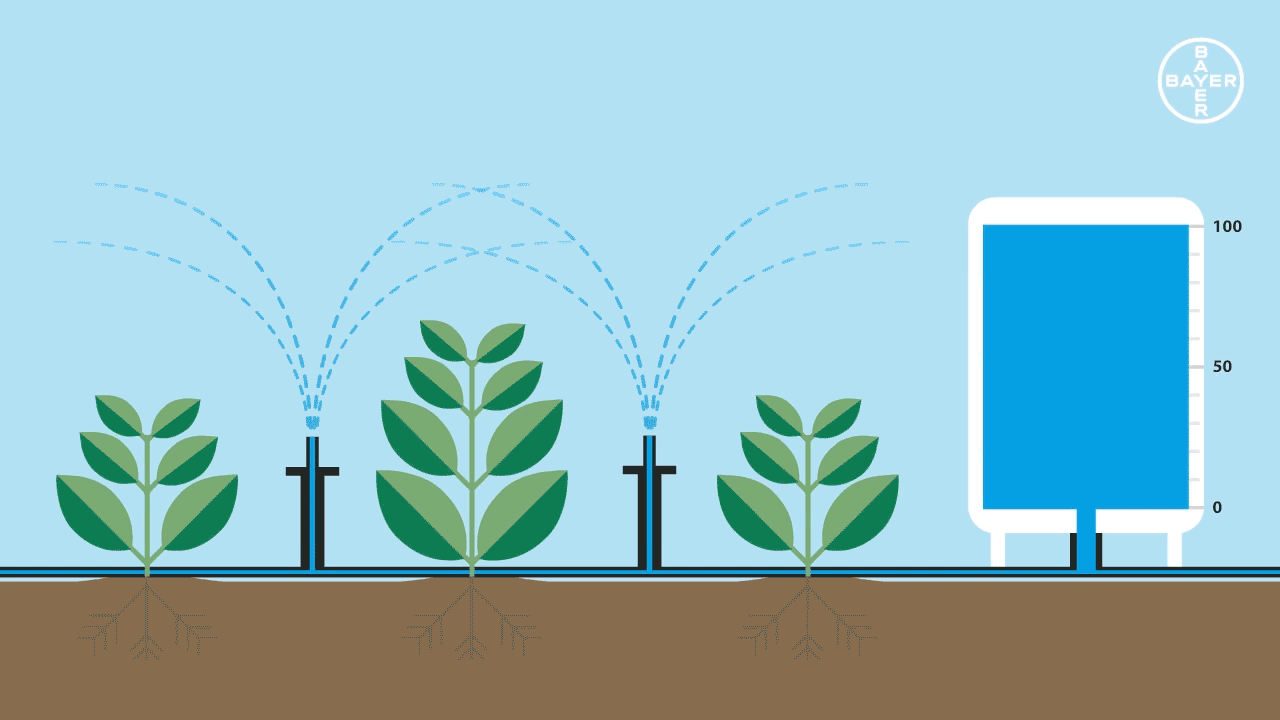FARMER'S DIGEST: IRRIGATION Technology beyond bookish gibberish!
Have you ever taken initiative to personally provide your crops, whether in the backyard or in the crop field, with water?
Why did you pick up that bucket and pour water on your plant?

Credit: commons.wikimedia.org
Why did you attach that hosepipe to your tap and lead water to the garden? Why did you dig those trenches to lead water from the road or from the culverts to your garden?
- What condition of the crop/field/garden were you trying to mitigate?
- What condition of the environment/field/garden were you trying to achieve?
That was, simply put: irrigation.
Basically Irrigation is the application of water to crops, under three basic conditions.
- When rainfall is absent such as in arid and semi-arid regions
- When rainfall is inadequate, in terms of duration and intensity
- Where crop yield is known to improve specially by addition of water
Now I know you Google and read all those definitions of irrigation, and they come with lots of complexities.
Simplified nonetheless for lay farmer consumption, every definition, must conform to the application of water being in in order to meet either one, or all of the above conditions.
Importance of Irrigation
When you picked up that bucket, collected water from your tap or borehole or drum, any source for that matter, and went ahead to your plant/plants and showered it with the water, you certainly had a condition (s) you were trying to either mitigate or to achieve, or even both.
Now the question is: Why did you find it necessary to mitigate/achieve that condition? If you can, and should, figure out the reason (s), then you have a good idea of why it is important to irrigate your crops.
Do not be awed by the simplicity of that idea, technological matters are that simple…classrooms and textbooks seem to complicate them!
I have no interest in textbook and science-deep explanations. Saying irrigation supplies crops with the required amount of hydrogen and oxygen, despite this being true, hardly connects nor does it practically appeal to the farmer.
So lets us stay simple, basic.
Among several other factors:-
Irrigation enables a farmer to crop without interruption as would otherwise be the case under rain-fed agriculture conditions. Thus a farmer is able to crop continuously, throughout the year since water is no longer a limitation.
Irrigation also ensures that you are able to bring more previously un-cultivated land into agricultural use, and as such, avoid land wastage and scale up production.
Furthermore, irrigation ensures high crop yields and as such guarantees the farmer product quantity.
Further still, Irrigation ensures high quality of crop products, especially in vegetables such as tomatoes and in fruits such as citrus.
Types of Irrigation
There are now several types of irrigation, but most are adapted to large scale/commercial production.
Here are specific types not only common, but adapted across all tiers of farmers whether small or large scale, subsistence or commercial, agricultural garden or lawn.
a) Manual

Credit:www.communicatescience.eu
This is the rudimentary one, which almost every household daily performs, albeit without recognizing as irrigation.
And that because the common psyche is that irrigation is complicated. It involves the rudimentary use of buckets and watering cans.
Of course as with any manual system, this is time consuming, and only applicable to few plants, say in the backyard!Surface irrigation.
b) Surface irrigation
In this, water is spread and moves over the land to wet and infiltrate, following the lands/garden’s natural gradient under simple gravity.

Credit: keywordsuggest.org
c) Sprinkler
Sprinkler irrigation is a replication of natural rainfall, and follows a similar principle.

Credit: commons.wikimedia.org
Here, water pipes lead water to the field to erect pipes set out at appropriate field locations.
Under high pressure drawn from a mechanical pump, push water upwards.
From up, the water jet breaks into droplets, which return down, and wet the plants as a rain-shower.
d) Drip irrigation
With drip irrigation, water is delivered to the precise root-point of the plant, drop by drop. In contrast to sprinkler irrigation which wets/showers the entire field/garden indiscriminately, drip irrigation selectively wets on or near the growing root base. It is therefore more water economical.
It also operates under pressure, but relatively much lower pressure is required in drip irrigation compared to sprinkler irrigation. Indeed, in small acreages, gravitational pressure can be used, in which case the water reservoir is raised at least 1 meter up.
Related posts
- Tutorial #1 - Basic steps to design a Drip Irrigation system (10m×10m) for tomato growing
- Tutorial #2 - Basic steps for laying out irrigation system
- Tutorial #3 - How frequently should you irrigate/water your tomatoes?
- Tutorial #4 - How to tell you have over-watered/over irrigated your tomatoes
Tutorial #4 - For free! - Complete fixed sprinkler irrigation system Design for 1.8 acres (Drawings/specifications)

Congratulations @steemitseed! You have completed some achievement on Steemit and have been rewarded with new badge(s) :
Click on any badge to view your own Board of Honor on SteemitBoard.
For more information about SteemitBoard, click here
If you no longer want to receive notifications, reply to this comment with the word
STOPNice overview of irrigation! Water distribution is a major consideration you have to make if you want to have any sort of successful yields!
True. Thanks for sharing in.